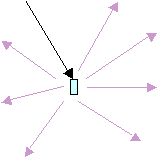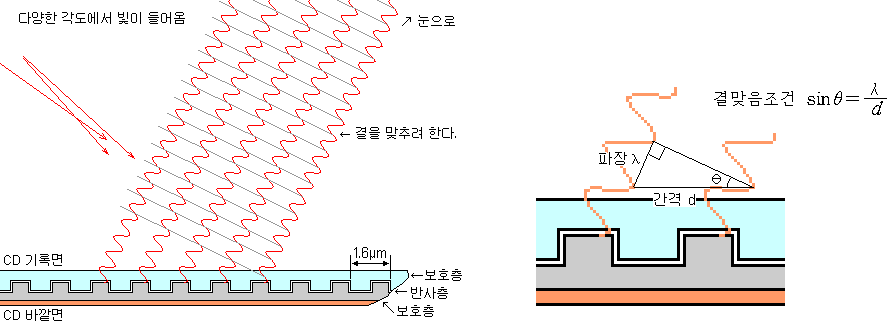- Adjust the wavelength of light to choose the color of light you want.
- If you adjust the angle of reflection correctly, the phases of the light may coincide.
- That angle is the angle at which light is reflected by interference.
Very small mirror
If there is a tiny mirror, will it act as a mirror?

If the mirror’s size is small below the wavelength of light, it can no longer act as a mirror.
Small mirrors below the wavelength of the light scatter the light in all directions.
If the mirror is flat, the materials that make up the mirror should be evenly spread.
However, microscopic materials are treated as points, and the meaning of the angle of incidence and reflection is invalid.

The CD is arranged in a tiny mirror side by side!
Very narrow mirrors are engraved on the CD surface at regular intervals.
You can’t see the lines with your eyes.

The light reflected from each mirror is scattered and creates an unusual phenomenon. Scattered lights interfere with each other. As a result, light is reflected only at certain angles.

For light with the visible wavelengths to cause diffraction, the spacing must be very short, as a CD’s surface.
Generally, the wavelength of visible light is 400nm ~ 700nm, and the track distance of CD is 1600nm (= 1.6㎛) which is slightly larger than visible light.
Principle of interference
Light (photons) like to go in the same phase. In the same phase, constructive interference occurs. If the phases are different, the waves cancel each other out.
Light reflected from narrow mirrors, spaced at regular intervals, such as a CD, has the opportunity to scatter in many directions. However, the photon tries to proceed only in a phase similar to the photon next to it. Therefore, proceed only at a certain angle.
In this case, you can see the rainbow colors because the light only travels at a certain angle, depending on the wavelength.